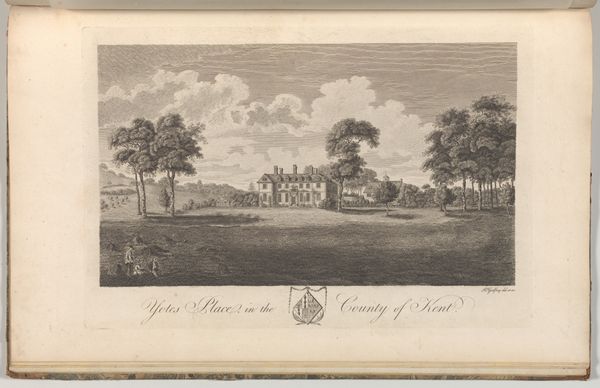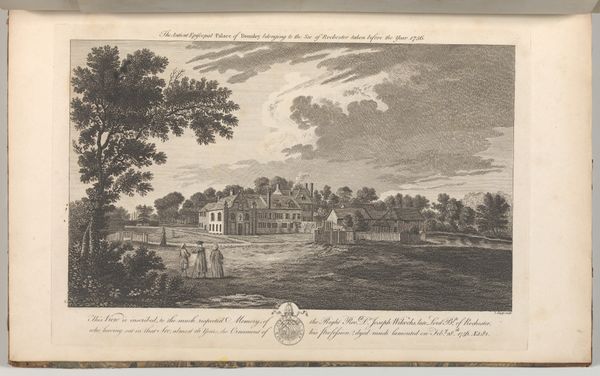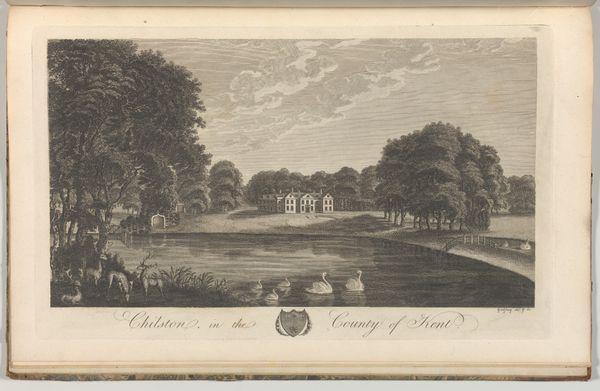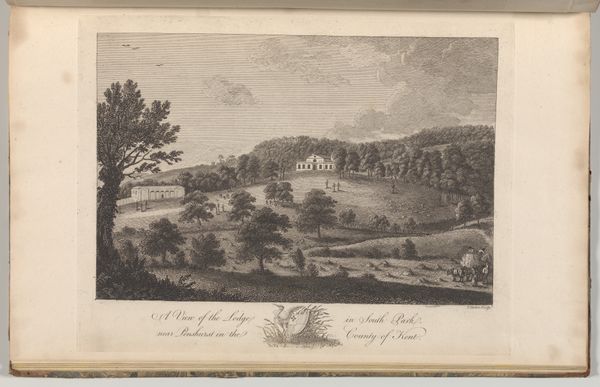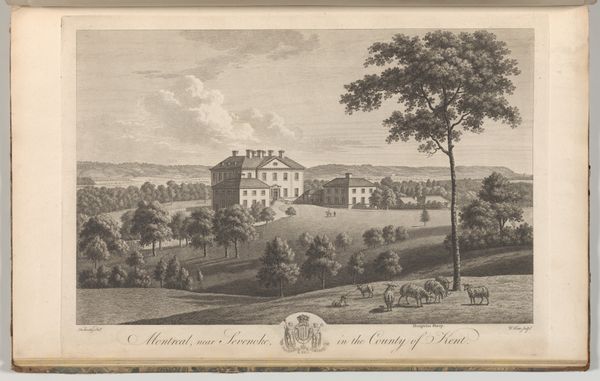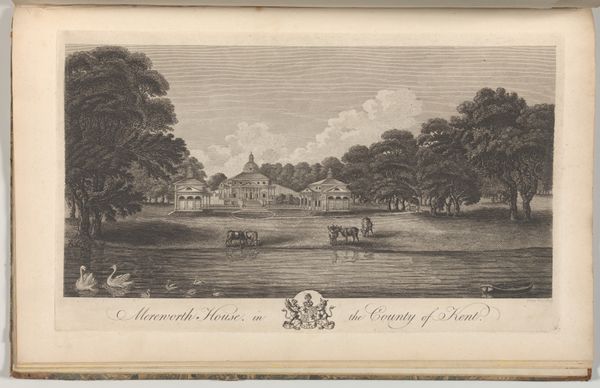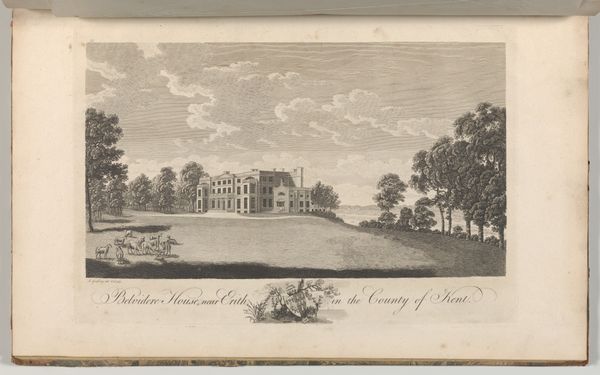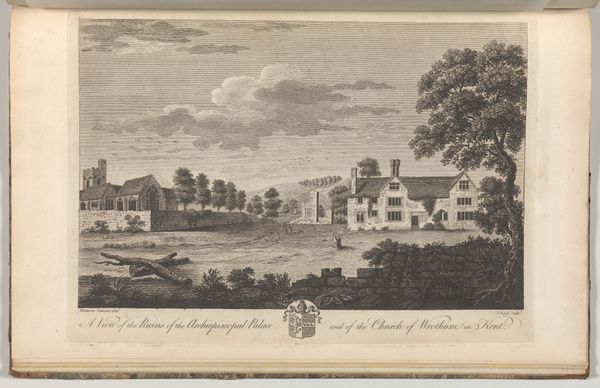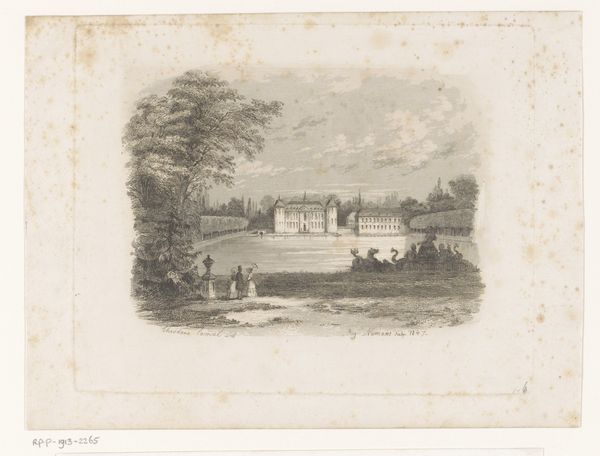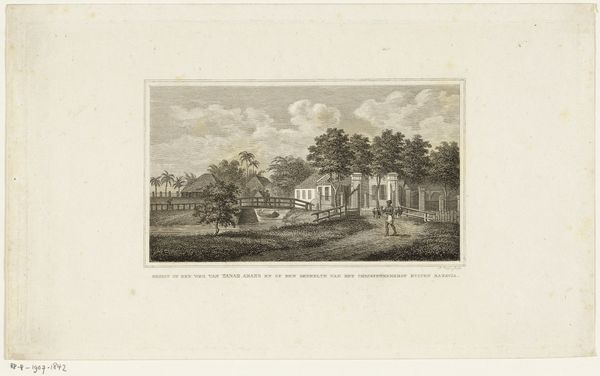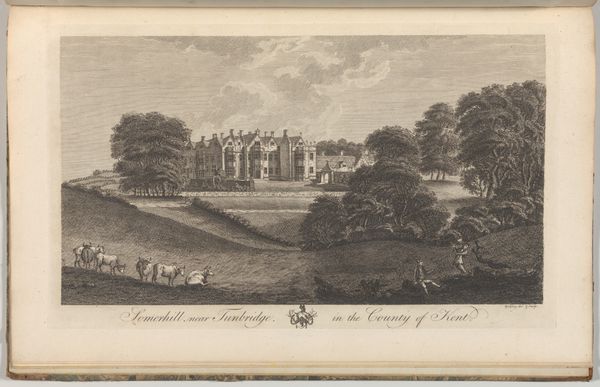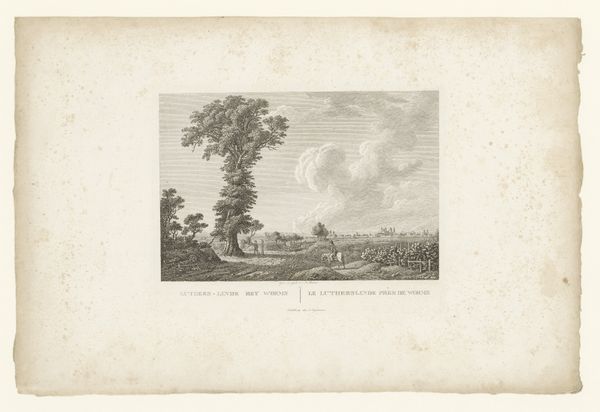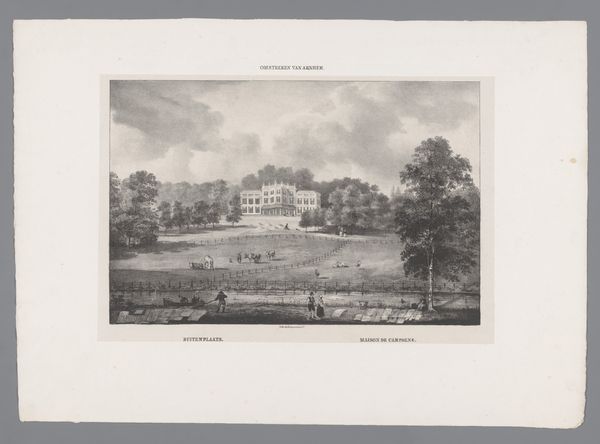
Antiquities Dug up at Different Times in Crock-field near Newington, from Edward Hasted's, The History and Topographical Survey of the County of Kent, vols. 1-3 1777 - 1790
0:00
0:00
drawing, print, etching, engraving
#
drawing
#
neoclassicism
# print
#
etching
#
landscape
#
engraving
#
building
Dimensions: Book: 17 5/16 × 11 × 13/16 in. (44 × 28 × 2 cm) Sheet: 16 15/16 × 10 5/8 in. (43 × 27 cm) Plate: 10 1/16 × 14 in. (25.5 × 35.5 cm)
Copyright: Public Domain
Editor: Here we have an etching titled "Antiquities Dug up at Different Times in Crock-field near Newington, from Edward Hasted's, The History and Topographical Survey of the County of Kent, vols. 1-3", created between 1777 and 1790 by an anonymous artist. It seems like a very calm, almost serene landscape. What grabs your attention in this piece? Curator: Ah, a topographical print! They're little time capsules, aren't they? What strikes me is the blend of the factual and the idealized. Look at the almost exaggerated cloud formations – theatrical even. It speaks to the romanticizing of the English countryside popular at the time. Notice how the house, almost diminutive in scale, is framed by the landscape? Almost as if the land itself bestows importance. What do you make of the lack of human presence? Editor: It does seem a little… empty. Perhaps the artist wanted to focus solely on the architecture and landscape itself, rather than the people who inhabited it. Is that typical of neoclassicism? Curator: Partially, though neoclassicism usually looks to antiquity. What's Neoclassical here is restraint, clarity, order in nature – almost an architect's vision of an orderly landscape. There is the faintest pastoral element: little animals, grazing land. Though it’s less about people *living* the land, and more about *owning* it. You can almost hear the echo of ownership ringing through the silent vista! The lines of property subtly demarcated with each tree, rise and fall. Isn't it fascinating how something seemingly so straightforward can hold so much? Editor: I hadn't thought about the ownership aspect, but that makes a lot of sense! It’s like a silent declaration. I’ll definitely look at these types of landscapes differently now. Curator: Exactly! It's like peeking into a silent conversation from centuries ago. Who knows what other secrets they hold if we only look closely.
Comments
No comments
Be the first to comment and join the conversation on the ultimate creative platform.
